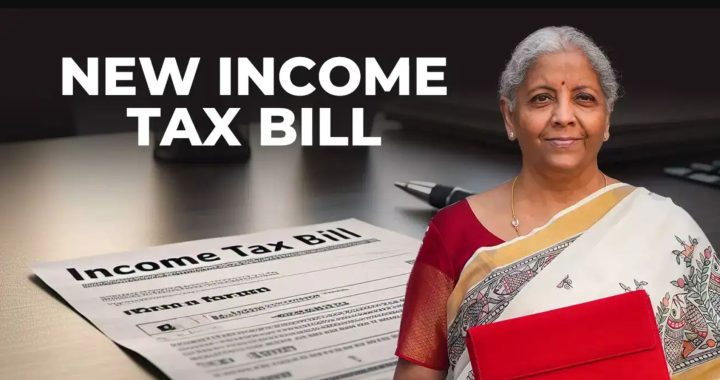The Highs and Lows of the Union Budget 2017

India’s 2017 budget brings a hike in government spending and reduces taxes as Prime Minister Narendra Modi assures to help the deprived and the poor for winning back votes of those bruised by demonetization.
The Indian Finance Minister, Mr. Arun Jaitley from his so thought “magic box” brought an increase in spending for infrastructure, rural development and combating poverty, and tried to provide assurance to voters and the lawmakers that the impact of government’s demonetization gamble over the country’s economy will wear off soon.
The Union Budget 2017 comprised of highs and lows with some sectors bagging more than the others.
Likely winners by Budget 2017
Indian Startups – The Indian startup community has welcomed the lower corporate tax to the hilt as well as the move for extending the 3-year tax exemption within first 7 years from previously 5 years.
Real estate Sector – Providing infrastructure status to the affordable housing meant for helping the developers in raising money cheaply and easily, in so doing reduced construction costs. The Modi Government has already promised to provide housing for everyone by 2022. Housing developers such as Ashiana Housing, Mahindra Lifespace, Value and Budget Housing Corporation and Tata Housing are all set to benefit from it.
Infrastructure Sector – Mr. Jaitley plans for spending $59 billion (3.96 trillion rupees) on infrastructure projects during the financial year 2017-18. This includes 640 billion rupees to be spent on state and national highways. This would boost the infrastructure companies and will also benefit the real estate and tourism industry. Companies like Larsen and Toubro, IRB Infrastructure Developers and Gammon Infrastructure Projects are likely to reap benefits from it.

Retail & Consumer goods –The Finance Minister aims at putting more amount of money in the hands of the middle class by reducing the individual tax rate to 5% for income between Rs. 2,50,000 to Rs. 5,00,000, and reducing the corporate tax to 25% for small and medium enterprises. It would likely boost spending and help consumer goods companies such as Hindustan Unilever Ltd, ITC Ltd, Godrej Industries, Dabur India and Marico Ltd.
Gas importers – Mr. Jaitley has reduced the import tax on LNG (liquefied natural gas) to 2.5% for boosting the usage of cleaner fuel used at large in power and fertilizer sectors. It will help the likes of as Petronet LNG and Gail (India).
Probable losers as per Budget Proposals 2017
Auto Sector – The Indian auto sector didn’t receive any clarity over the incentives for producing electric and cleaner fuel vehicles. Limiting the cash transactions to Rs. 3,00,000 will likely hurt the car sales, particularly the luxury vehicles segment. The Indian auto component sector was hoping to receive some tax incentives on research and development this time. It would disappoint car makers such as Maruti Suzuki, Tata Motors and Mahindra & Mahindra.
Oil industry –The development levies for the oil and gas companies were anticipated to reduce but didn’t, this might be a potential blow for ONGC.
Electronics Industry – Mr. Jaitley levied an additional duty of 2% on populated printed circuit boards that account for nearly 50% of the cost of manufacturing a smartphone. The intention is to thrust assembling of the circuit boards in the country while reducing imports. It will increase the prices of most of the mobile phones which are imported and assembled in the country.
Large corporates – Mr. Jaitley cut the corporate tax to 25% only for the small and medium companies, giving a minor benefit to the country’s large conglomerates.
Manufacturing Sector – The Indian manufacturing sector hoped for a boost from a rate cut in MAT (minimum alternative tax) and capital investment incentives but to their dismay, there was nothing in the budget.


 ITAT Amritsar: No Section 269SS Violation for One-Time Cash Payment Before Sub-Registrar
ITAT Amritsar: No Section 269SS Violation for One-Time Cash Payment Before Sub-Registrar  Tax Officials Unleash Digital Dragnet: How New Raid Powers Redefine Privacy, Property Rights in India and likely to Fuel Corruption
Tax Officials Unleash Digital Dragnet: How New Raid Powers Redefine Privacy, Property Rights in India and likely to Fuel Corruption  Income Tax Department Rewards for Reporting Tax Evasion: A Comprehensive Guide
Income Tax Department Rewards for Reporting Tax Evasion: A Comprehensive Guide  Forfeiture of Gratuity by Employer- What are the Remedies for an employee- Can employer be challenged?
Forfeiture of Gratuity by Employer- What are the Remedies for an employee- Can employer be challenged?  Employer can forfeit gratuity of an employee in case of moral turpitude
Employer can forfeit gratuity of an employee in case of moral turpitude  Diving Deeper: The Impact of the New Tax Bill on Dairy and Farming Income
Diving Deeper: The Impact of the New Tax Bill on Dairy and Farming Income